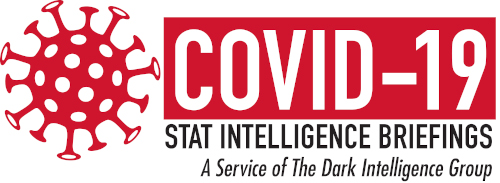Widespread at-home COVID-19 testing bears watching as a potential disrupter for clinical laboratories by summer 2021
Since the beginning of the COVID-19 pandemic, every form of SARS-CoV-2 testing has been required to be performed by a CLIA-certified laboratory. Although this public health emergency brought flexibilities for the development of new COVID-19 testing settings and methodologies, certification status under the Clinical Laboratory Improvement Amendments of 1988 has been a consistent requirement for the analysis and interpretation of SARS-CoV-2 tests.

However, in a long-awaited development, the US Food and Drug Administration (FDA) granted the first emergency use authorization (EUA) Nov. 17, 2020, for a fully at-home COVID-19 diagnostic testing. While the FDA has, for several months, made an at-home COVID-19 testing EUA template available for developers, this EUA marks the first EUA to be granted for this type of test. Moreover, at-home testing for SARS-CoV-2 may have meaningful implications for clinical laboratories, as this type of test enables patients to collect and perform COVID-19 tests themselves—and under the EUA no lab expertise is required for analysis and interpretation.
Implications of At-Home COVID-19 Testing for Clinical Laboratories
To learn more about how FDA-authorized at-home coronavirus testing could affect clinical laboratories in the year ahead, the COVID-19 STAT Intelligence Briefings Service spoke with Frederick (Fritz) Kiechle, MD, PhD. Currently Medical Director at Boca Biolistics in Pompano Beach, Florida, Kiechle is a recognized expert within the clinical laboratory community. Kiechle is one of the first pathologists in the US to develop molecular testing in a hospital laboratory. He has written several textbooks on collecting, transporting, and preparing medical laboratory specimens.

For COVID-19 STAT, Kiechle explained the at-home COVID-19 test covered under the Nov. 17 EUA. Specified as the Lucira COVID-19 All-In-One Test Kit developed by Lucira Health, Inc., the test uses loop mediated isothermal amplification, said Kiechle. This molecular diagnostic test is similar to the technology used with the point-of-care molecular test used by Cue Health that has recently received interest from the US Department of Health and Human Services (HHS) for its mobility and rapid response time.
The Lucira at-home COVID-19 test works by swirling the self-collected sample swab in a vial that is then placed in the test unit. In 30 minutes or less, the results can be read directly from the test unit’s light-up display that shows whether a person is positive or negative for the SARS-CoV-2 virus.
The test is relatively user friendly, according to Kiechle. “During its FDA EUA, [Lucira] examined a pretty substantial number of individuals performing the test at home to prove that it could be done,” he explained. “It’s not completely straightforward, but it’s not very difficult either. Everything the consumer needs comes in the packet which they receive in the mail from Lucira, and that even includes the batteries.” Kiechle believes that most people will be able to follow the instructions and perform the test for themselves without much difficulty.
Some restrictions, however, must be noted of the Lucira COVID-19 All-In-One Test Kit. “It’s for prescription use only, so someone can’t just walk in a drugstore and buy it,” Kiechle explained. “A prescription from a doctor is needed in order to get the test.” The EUA also specifies that this test is for use with self-collected nasal swab specimens in individuals aged 14 and older who are suspected of COVID-19 by their healthcare provider. The cost of the Lucira test is $50, according to Lucira, and Kiechle says he thinks this is “a price point most people can live with.”
When Rise of At-Home COVID-19 Testing Market Could Create Competition for Clinical Laboratories
The future outlook for at-home COVID-19 testing is likely to grow because the demand for quick and convenient COVID-19 testing continues to increase. “I think everyone is moving in that direction,” Kiechle says. “They understand that we need something that is more readily available, and once vaccines become available, everyone will want an assay to quickly show that they’re okay.” Kiechle also pointed out that multiple countries are examining the idea of a safety “passport” that allows people to prove their negative and/or vaccinated status for allowing them to travel and move about more freely.
According to a press release by Lucira Health, these at-home coronavirus tests will be nationally available by spring 2021 and will be immediately available only in northern California (Lucira Health is headquartered in Emeryville, California) and southern Florida. Availability of the Lucira at-home COVID-19 test is, however, expected to increase as the demand for at-home testing grows.
It has taken the FDA many months to authorize a COVID-19 test for consumer self-testing to result. In time, clinical laboratory leaders may find that as the first at-home testing becomes available and as the focus on such testing increases, the volume of COVID-19 related testing processed by clinical laboratories may be affected.
Other companies are likely eager to bring their own simple COVID-19 tests to market. So while it seems unlikely that COVID-19 test volumes in clinical laboratories will be impacted before spring 2021 when Lucira’s test becomes available, this technological development introduces a new element of competition for labs.

—By Caleb Williams, Editor, COVID-19 STAT
Related Resources:
FDA Press Release: FDA Authorizes First COVID-19 Test for Self-Testing at Home






